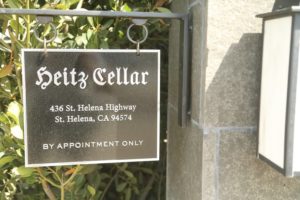
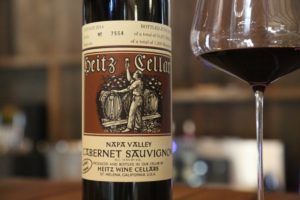
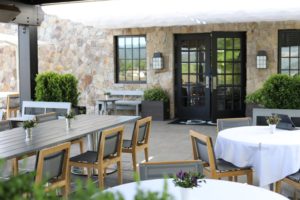 Heitz Cellar maintains a tasting salon located almost directly across from Hall Winery on Highway 29 slightly south of the town of St. Helena. This tasting room opened in 2002 and is on the location of the original Heitz Winery which was founded in 1961 by Joe (passed away in 2000) and Alice Heitz. Heitz Cellar is one of the older continuously operating wineries in Napa Valley. In fact, when they were founded, there were less than 20 wineries in operation in Napa Valley. It certainly took a while for Napa Valley to recover from Prohibition and today more than 80 years after the end of Prohibition there are now more than 1,100 producers in Napa Valley making wine commercially.
Heitz Cellar maintains a tasting salon located almost directly across from Hall Winery on Highway 29 slightly south of the town of St. Helena. This tasting room opened in 2002 and is on the location of the original Heitz Winery which was founded in 1961 by Joe (passed away in 2000) and Alice Heitz. Heitz Cellar is one of the older continuously operating wineries in Napa Valley. In fact, when they were founded, there were less than 20 wineries in operation in Napa Valley. It certainly took a while for Napa Valley to recover from Prohibition and today more than 80 years after the end of Prohibition there are now more than 1,100 producers in Napa Valley making wine commercially.
Joe was born in Illinois and grew up on a farm. Veterinary medicine was his first calling; he dropped out of school after World War II started to join the United States Air Force. Through the air force, he was stationed in Fresno – after the war finished, he went to UC Davis where he graduated with a degree in enology in 1948, three years later graduating with his master’s degree, also from UC Davis (he was one of only a handful of students in his graduating class with enology degrees). Following his graduation, he had two job offers, one from the owners of Freemark Abbey at the time and the other from GALLO. He ended up taking the job at GALLO where he worked with Ernest and Julio Gallo for a short while.
Joe received invaluable training for a number of years in the 1950s when he worked with the famed winemaker and soils expert André Tchelistcheff at Beaulieu Vineyard. And right before starting Heitz Cellar Joe was a professor and helped setup the enology department at Fresno State in the late 1950s.
Joe’s introduction to their St. Helena property came about because of a conversation he had with long time Napa vintner Hanns Kornell (proprietor at the time of Kornell Champagne Cellars located on site of what is now Frank Family Vineyards). Hanns mentioned that an elderly gentleman, Leon Brendel (incidentally the first winemaker at Freemark Abbey) might be interested in selling his property and tiny winery just south of St. Helena. In fact, he was, and in 1961 Joe and Alice purchased his 8.5 acres just south of St. Helena. Heitz Cellar made wine here for only a few years in a small building directly in front of/west of the current tasting salon building. At the time Brendel grew and made only one wine, an obscure varietal called Grignolino. Heitz Cellar still owns Brendel’s old sign winery welcoming visitors to come try his Grignolino which now hangs in the Brendel Wines tasting room in downtown Napa.
Their first wines were not estate but were rather purchased wines in cask or barrel and then bottled under Heitz Cellar. The earliest vintage of these wines that Joe purchased was a 1959 vintage Pinot Noir and several subsequent vintages including some Chardonnay from Hanzell Vineyards near the town of Sonoma in Sonoma County. Founder of Hanzell, Harold Zellerback passed away in 1963 and his wife Hana soon liquidated their inventory (including several vintages) and sold the property. As a result, some of the first Heitz sold wines were actually from Sonoma County rather than Napa Valley. Hanzell has been owned by the de Brye family since 1975 (since 1991, New York based Alexander de Brye).
Remarkably these old Pinot Noir and Chardonnay vines date from 1953 and are referred to as the Ambassador’s 1953 Vineyard. These are the oldest continuously producing Chardonnay and Pinot Noir vines in the U.S. Wines from their grapes are not made every year. This 4-acre block is located directly below the winery and is about 2/3 Chardonnay (the upper rows) and about 1/3 Pinot Noir (the lower rows). Newer vines have been interplanted in the rows, replacing vines as they die. And there was another Napa Valley connection; these old Chardonnay vines were originally cuttings from Stony Hill Vineyard in Napa Valley’s Spring Mountain District.
The 2020 Hanzell Chardonnay Ambassador’s 1953 Vineyard was fermented in 33% stainless steel and 67% French oak barrels (the barrel fermented lots we put through 100% malolactic fermentation). The resulting wine was then aged for 14 months in French oak barrels of which 33% were new. This wine is medium gold in color; the aromatics are ripe, sweet and expressive of stone and assorted tropical fruits. They include crème Brule, vanilla, butterscotch, honeycomb, honeysuckle, peaches in light syrup, apricot, nectarine, and ripe papaya. This wine reveals flavors of apricot, pineapple, pear and citrus including mandarin and kumquat. It’s rich flavoring is complemented nicely by the brightness and almost tangy-like acidity. Long finish. Beautifully balanced. And it is highly worth pursuing a rare bottling of this coveted wine.
The entire Hanzell property is 200 acres; as of our latest update to this review, the property planted to 46 acres of vines including the majority Pinot Noir and Chardonnay with a small block of Cabernet Sauvignon. Hanzell practices regenerative farming and is CCOF certified.
Hanzell Winery
Hanzell Vineyards
In its early years, Heitz also purchased Cabernet Sauvignon from Christian Brothers Winery and bottled it as his own.
Several years later, looking to expand and needing more space for winery operations Joe remembered visiting the old Rossi Ranch at the end of Taplin Road years prior. He and Alice drove up to the ranch, walked up to the wooden porch and knocked on the door of the old white cottage. The owner at the time, Fred Holt & his wife Alice agreed to sell his property (no vines were planted here at that time) to Joe with a handshake that day. Others in the valley heard that Joe was buying the property and one individual offered a higher price but was refused as Fred honored his handshake agreement with Joe. Joe and Alice purchased this property in 1964 and lived in the old cottage for many years. A small guest house is located next to the winery across from the cottage; the Heitz family used to refer to this as the ‘Heitz Hilton’.
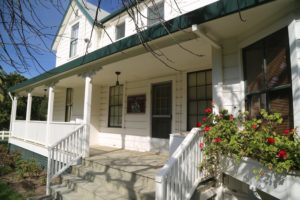
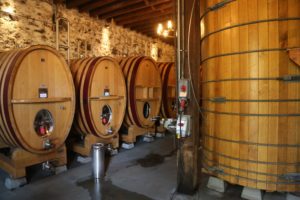 The old stone gravity 2-level winery was built with rock quarried from nearby and dates from 1898. The foundation stone with the date and name of founder, Anton Rossi is located high up on the stone wall above the main winery entrance. After prohibition the winery was owned by a San Francisco restaurateur, A. Valenti (who wasn’t at the property very often). A Valenti sold the property to Fred Holt during World War II.
The old stone gravity 2-level winery was built with rock quarried from nearby and dates from 1898. The foundation stone with the date and name of founder, Anton Rossi is located high up on the stone wall above the main winery entrance. After prohibition the winery was owned by a San Francisco restaurateur, A. Valenti (who wasn’t at the property very often). A Valenti sold the property to Fred Holt during World War II.
The Heitz family removed the old redwood tanks from within the winery and replaced them with large oak tanks – each holding up to 1500 gallons. Walking into this part of the winery is like walking back decades; these old tanks continue to be used for aging their wines. The bung holes are plugged with wooden bungs and beeswax is used to seal any leaks.
When deciding upon a label Joe decided to see what his family could come up with. David Heitz who was only 10 at the time drew a basic stick man holding up a glass of wine framed by barrels of wine in the background. Liking what he saw, Joe brought this raw drawing to noted painter, printmaker, muralist, and illustrator Mallette Dean who then fine-tuned the original drawing. A beautiful mosaic of the Heitz Cellar label hangs on an exterior wall of the old cottage.
The winery and property are located about 2 miles east of the tasting room just past the driveway leading to Joseph Phelps winery.
Heitz also had a remarkable wine collection of not only Napa Valley wines but also international bottles. According to mention in the book, Napa Wine Country by Earl Roberge, one evening Heitz opened the following wines at an event in his cellar in the early 1970s: an 1816 Madeira, a 1934 Chateau La Tour, a 1929 Montrachet, a 1945 Beaulieu Cabernet Reserve, a 1964 Chateau La Tour, a 1945 Mouton-Rothschild and a hundred year old brandy. If we were ever able to go back in time in Napa Valley, attending this event would be towards the top of our list.
Until selling, Heitz Cellar was still very much a family owned and operated business overseen by Joe & Alice’s children; David as winemaker (over 30 years of wine making experience – this amount of time at the same winery is quite rare) and Kathleen as President. Youngest son, Rollie operated his own winery, Midsummer Cellars which he later closed down and moved to Italy.
In April 2018 Heitz Cellar sold to Nashville based Gaylon Lawrence Jr. The sale included 425 acres of vineyards, the winery at the end of Taplin Road and the tasting room on Highway 29 just south of St. Helena. This was Gaylon’s first purchase in Napa Valley; he has since purchased additional historic vineyards and winery properties. Soon after his purchase the second generation become involved; Gaylon’s daughter Westin is a part of the Heitz Cellar team. Lawrence Wine Estates is the parent company for both Heitz Cellars and other wineries under their ownership.
Today approximately 525 acres of which about 425 are planted to vines are currently owned by Heitz Cellar. They farm their vineyards sustainable and are organically (CCOF certified). In 2019 and 2020 they transitioned to completely biodynamic farming and are now perhaps the largest vineyard landholder in Napa Valley farming completely biodynamically.
St. Helena Tasting Salon
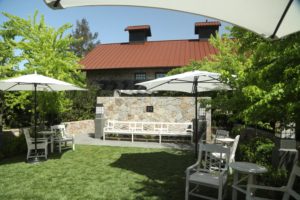
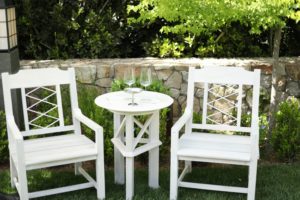
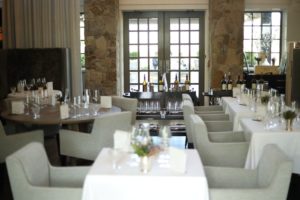 The tasting salon is located in a classy small stone building with sit down tastings held inside as well as outside on the rear terrace. Guests are greeted at the front door by a smartly dressed wine educator with a glass of white wine. Weather permitting, guests are encouraged to enjoy this first wine outside next to the small lawn and courtyard in front of the winery. This is approximately the site where the original Heitz Winery was located including a small trailer where the Heitz family used to greet visitors for tastings and sales.
The tasting salon is located in a classy small stone building with sit down tastings held inside as well as outside on the rear terrace. Guests are greeted at the front door by a smartly dressed wine educator with a glass of white wine. Weather permitting, guests are encouraged to enjoy this first wine outside next to the small lawn and courtyard in front of the winery. This is approximately the site where the original Heitz Winery was located including a small trailer where the Heitz family used to greet visitors for tastings and sales.
A large arbor to the rear of the salon providing shade is located over a raised terrace overlooking the surrounding estate vineyard which employees still refer to as the One and One Vineyard (dating back to the days of Brendel); this space features excellent views of vineyards spreading out in all directions to the east. Weather permitting, this is a gorgeous spot to enjoy a tasting – and the softly playing soundtrack complements the ambiance very nicely. The tasting salon is located close to the Wine Train railroad tracks (at certain times of the day visitors will hear the train honking its horn as its passes by) and almost directly across the highway from Hall Winery. Visitors are allowed to walk down to the edge of the vineyard to see the vines (all planted to Cabernet Sauvignon).
This is an intimate tasting experience as the salon is very small, with a cozy fireplace and several comfortable chairs for relaxing. The low bar that greeted visitors here for years is gone. Two appealing additions were added inside since the renovation, a private tasting room a small charcuterie room which houses a state-of-the-art Heitz Cellar branded meat slicer manufactured in the United Kingdom.
Tasting notes and other details about each wine will be provided as the wine is poured. The small tasting salon is in no way a reflection of their winery size. Visits to the salon require an appointment. Heitz Cellar was one of the very last open to the public Napa Valley wineries to no longer charge for tastings. Complimentary tastings are no longer offered; today visitors can select from one of several tastings including Timeless (single-vineyard Cabernet Sauvignons).
The salon remodel was completed towards the end of 2021 and reopened for hospitality on February 18, 2022, for tastings.
Through a partnership with Lexux, Lawrence Wine Estates offers vineyard visits combined with educational experiences to several of the vineyard estates under their ownership. Tastings at associated locations follow all vineyard visits. These include the Heitz Trailside Vineyard in Rutherford, Stony Hill, the Ink Grade property on Howell Mountain and associated Burgess Estate vineyard properties. Visits are transported in a luxury Lexus vehicle.
Estate Experience
More private visits can also be arranged by appointment to the winery estate, located at the end of Taplin Road. Visits start at an old airy wooden barn with a welcome glass of current release Chardonnay. The primary tastings take place in the upstairs loft of the old stone cellar next to a number of beautiful wooden casks. This space was renovated beautifully and opened in 2021. The original chandeliers were installed here by Heitz, rescued from an old house slated for demolition.
Wine curators (a term suggested by long time Heitz hospitality employee, Joe Grabski) lead guests through the tasting with a focus on their single vineyard Cabernet Sauvignon wines. This is a personalized and enjoyable tasting.
—
SELECT VINEYARDS
Martha’s Vineyard
Martha’s Vineyard (founded by Tom and Martha May – Tom died in 2017) has been family owned since the early 1960s. This is one of the more recognizable and iconic vineyards in all of Napa Valley and second to To Kalon is probably the valley’s most famous vineyard site. Planted against the western hills of the Oakville appellation, this is arguably the heart of some of Napa Valley’s most prized red wine grape vineyard land. Nearby vineyard neighbors include parts of Robert Mondavi To Kalon, UC Davis experimental vineyard and an Opus One section of To Kalon.
The May’s connected with the Heitz’s in an interesting manner. The previous owners (two of Napa valley’s most relentless supporters and foodies, and later founders of Bella Oaks Vineyard) Belle and Barney Rhodes had left several bottles of Heitz Cellar for Tom and Martha. This was the first introduction for the Mays to Heitz Cellar. Enjoying the wine and needing to find a buyer for his grapes, Tom drove up to Joe and Alice’s home – walked up onto the old porch and knocked on the door. Like a year earlier when Joe purchased this property with a handshake, a handshake would again seal a deal – this time Heitz would purchase fruit from Martha’s Vineyard.
This vineyard has been producing premium Cabernet Sauvignon for Heitz since 1965, although there were no vintages from Martha’s Vineyard in 1993, 1994 and 1995 due to needing to replant because phylloxera destroyed the vines. In 1966 Joe made the decision to bottle this wine as a single vineyard designate because of its own unique characteristics. Heitz Cellar was the first Napa Valley winery to bottle a single vineyard Cabernet Sauvignon; today some of Napa’s most sought after wines are from single vineyard sites.
The site is known for producing wines with minty, eucalyptus and chocolate aromatics; several giant eucalyptus trees grow on the eastern edge of the vineyard, but these aromatic characteristics probably are not derived from the trees, but rather from the combination of clone and soil type. These qualities are inherent in the wines from this site regardless of vintage.
Trailside Vineyard
This vineyard is located adjacent to Conn Creek Winery along the Silverado Trail across from Highway 128. Prior to Heitz purchasing this vineyard in 1984 they had already been purchasing grapes from this site for many years. The property was home to Shown & Sons Winery whose roots dated back to Santa Clara. Chris Shown told us that in the early 1960s the Shown family used to purchase grapes for hobby winemaking from vineyards in Morgan Hill, truck them back to their home in Santa Clara where they dug by hand a cellar in their backyard for barrel and bottle storage.
The Shown family purchased 80 acres of what is now the Trailside Vineyard in the late 1960s back when it was a prune and walnut orchard. The original Shown and Sons Winery building still stands, adjacent to Conn Creek Winery. For many years it was used as a barrel storage facility for Heitz Cellar. Incidentally Dick Shown’s son, Chris operates Brigadoon Wine Company, based in Oregon’s Willamette Valley.
A Heitz Trailside Vineyard Cabernet Sauvignon is produced from this property every year. This vineyard used to be planted to approximately 5 acres of Chardonnay and Heitz Cellar used to produce a Cellar Selection Chardonnay every year from this property. The soils are primarily alluvial.
And in late 2024 it was announced that a special limited-production Cabernet Sauvignon will be made in collaboration with Burgundy based Jeremy Seysses of Domaine Dujac and Haynes Vineyard winemaker Nico Cueva. The innaugural release of this wine was in 2025, the 2022 Trailside Vineyard Cabernet Sauvignon.
Linda Falls Vineyard
The site features well-drained volcanic soils. While this is a mountain site, the topography of the vineyard is rather gentle especially it’s western side. This vineyard is named after Linda Falls, a small seasonal waterfall located along Conn Creek (a pleasant hike with some steep sections) within the 177-acre Linda Falls Preserve on Howell Mountain. Twenty-five of these acres were donated by Kathleen Heitz. Linda Falls Preserve is a mostly forested area with hiking and biking trails including an old, paved road which roughly parallels Howell Mountain Road.
Select Wines
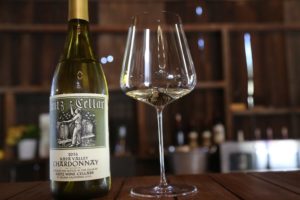
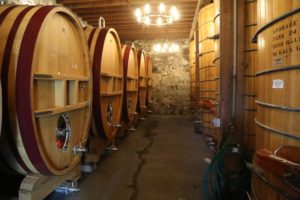
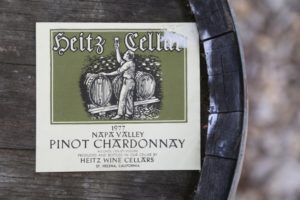 The focus of Heitz Cellar is premium single vineyard designate Cabernet Sauvignon however throughout their history, they have produced wines from other varieties as diverse as Barbara, Riesling, Malvasia Bianca, Pinot Noir, sparkling wines and even a dry Sherry. It should also be noted that Heitz Cellar has produced a Chardonnay every year since their founding in 1961. Since the transition in ownership, the focus of Heitz Cellar is exclusively on Chardonnay and Cabernet Sauvignon. Wines from any other varieties are bottled under other labels (non Heitz Cellar).
The focus of Heitz Cellar is premium single vineyard designate Cabernet Sauvignon however throughout their history, they have produced wines from other varieties as diverse as Barbara, Riesling, Malvasia Bianca, Pinot Noir, sparkling wines and even a dry Sherry. It should also be noted that Heitz Cellar has produced a Chardonnay every year since their founding in 1961. Since the transition in ownership, the focus of Heitz Cellar is exclusively on Chardonnay and Cabernet Sauvignon. Wines from any other varieties are bottled under other labels (non Heitz Cellar).
Whites/Rosé
Beginning in 2018, Heitz Cellar began producing the Quartz Creek Vineyard Chardonnay, from a vineyard in the Oak Knoll District that they purchased from Burgess in 2014. The site takes its name from when a well was begin dug and the resulting spoils were filled with quartz rock.
The 2019 Heitz Cellars Quartz Creek Chardonnay is medium gold in color; the aromatics quickly give reveal that this is not an oaky buttery driven wine from this variety. Rather the aromatics are crisp with notes of green and red apple, kiwi and melon. Shows a little bit of aromatic fruit sweetness as this wine evolves in the glass and warms slightly. The wine is superbly balanced across the palate; offers a rounded slightly creamy texture which is offset nicely with a mouthwatering brightness with flavors of citrus zest and a minerality note. Features plenty of liveliness; drink now or feel very comfortable this wine will keep its character for at least 5-7 years of cellar aging.
The Heitz Cellar 2016 Napa Valley Chardonnay. 1/5 of this wine was barrel fermented. No malolactic fermentation. This wine offers pleasant citrus driven aromatics along with notes of baking spices, honeysuckle and almonds. The palate shows notes of lemon, apple with some mineralities mid palate to the finish. Very bright, with a supple mouth feel that is not heavy. Does not show any buttery or oaky characteristics – very refreshing. We last tasted the 2006 vintage of this wine – we noticed a lot of similarities in our tasting notes between the two vintages – exactly 10 years apart.
Heitz Cellar produced a dry rosé before rosés of this style became trendy again. The Heitz Cellar 2018 Grignolino Rosé is noticeably pinkish-salmon color. Well-endowed on the bouquet, offers bright fruit with some sweeter aromatics. Aromas of strawberry and notes of jolly rancher flavored watermelon. Also, floral. A very food friendly offering with bright acidity and a tartness or zest which lingers on the finish. Previous vintages of this particular wine have been chosen by certain wine publications as one of their top wines of a particular year- truly remarkable considering the competition is often big red wines. This was the last year the Heitz produced a rosé from this variety; in 2019 they transitioned to producing a Grignolino rosé bottled under the Brendel label.
During one of our earliest visits to the tasting room, we had the privilege of trying an older Cabernet Sauvignon, in this case the 1998 Heitz Cellar Bella Oaks Vineyard Cabernet Sauvignon. Age has treated this wine well; it opens with dark earth aromas, almost forest floor like as well as some tobacco and leather. Ten plus years later, the palate is still very much fruit driven and rich in flavor. The tannins have been tamed by time, but still present excellent structure and in our opinion, this wine could go at least another 10 years.
Reds
The 2016 Heitz Cellar Martha’s Vineyard initially shows aromatics of dry rock, a mint and eucalyptus nuance. But let this wine breathe before taking it all in; the bouquet opens up very nicely revealing red fruit aromas including currant and cherry. On the palate, this wine is absolutely built for decades but is already superbly balanced in its youth. This balance is the wine’s hallmark, seamless across the palate without any harsh edges whatsoever. Offers flavors of red cherry and cranberry with a brightness that lingers on the finish without being to tart. The polished tannins are fine-grained and linger delicately. This wine defines the word balance.
The 2015 Heitz Cellar Martha’s Vineyard Cabernet Sauvignon is dark ruby in color; offers initial aromatics of dried herbs, violets, cloves and cardamom. Shows plenty of fruit including of black raspberry, representative of the vintage (more concentrated fruit than normal, from a year that was in the middle of prolonged drought). As the wine breathes it reveals more of that classic Martha’s Vineyard minty character. Offers plenty of red fruits on the palate including cherry, currant and cranberry. A noticeable brightness of fruit and acid lingers on the finish with gravelly, dark and earthy tannins. Also shows a final note of dried tobacco leaf.
The 2013 Heitz Cellar Martha’s Vineyard Cabernet Sauvignon offers an elegant bouquet with hints of eucalyptus, wintergreen, sage, rosemary and darker fruits. Also, slightly floral with notes of dried rose petals. Savory to. This wine is seamless from start to finish across the palate with flavors of plum and red cherry. Offers fine-grained slightly dusty tannins (not course in feel). The finish is well layered between fruit and structure with hints of tobacco leaf lingering. This is a wine from a vintage that needed time to smooth the rough edges which have turned into complexities, character and depth. We enjoyed this wine 7 years after vintage date, and it showed like a younger wine. Tons of life ahead of this beauty.
Later we tasted the 2013 Martha’s Vineyard wine again 9 years post vintage date; it continues to retain its aromatic freshness and youthful bouquet. No bottle bouquet here yet. Still has the pleasant herbal note on the nose. The gravelly tannins are still quite grippy, representative of this particular vintage. It is a huge vintage variation as compared to say the 2016 Martha’s Vineyard Cabernet Sauvignon which, while is a younger wine is much more balanced.
Lot C-91 a red blend was originally conceived in 1969 by Joe Heitz and produced only that year. This winery only direct to consumer wine was reborn in 2016, nearly 50 years after the inaugural vintage. The 2016 Heitz Cellar C-91 features grapes from Linda Vista, Trailside, Martha’s and the vineyard next to the tasting salon on Highway 29. Offers elegant fruit aromatics including of blackberry along with some violet under tones. Also shows dried herbs, sage and some earthy characters along with a hint of menthol as the wine breathes. The bouquet is slightly savory. Shows dark fruit on the palate with dusty integrated tannins lingering on a juicy mouthwatering finish. The texture is well integrated; this is a very balanced bottling that subsequently is very approachable. And the Lot C-91 stamped ink-looking font on the back of every bottle comes in 12 different font shapes and sizes.
The 2016 Heitz Cellar Linda Falls Vineyard, Howell Mountain is dark ruby in color; the aromatics are immediately intriguing with notes of violets, dried rose petals, dried herbs and blueberry. As the wine continues to evolve, it reveals a light aromatic note of mocha. This wine is very youthful at the time of our tasting, 6 years post vintage date. The plate is juice and mouthwatering with flavors of Santa Rosa plum and currant. The gravelly tannins are noticeable but not course in their textural feel. Finishes with flavors of cranberry, pomegranate and sour cherry – and a lingering tartness. This wine is available to club members or directly to those who visit the tasting salon or estate.
The 2016 Heitz Cellar Trailside Vineyard is medium to darker ruby in the glass. The bouquet is elegant or as one of their wine educators told us, a former floor captain at the French Laundry, “it is an elevated elegant valley floor wine”. The aromatics smell fresh and includes notes of red cherry and currant along with some dried herbs; it primarily features red fruits. The bouquet smells like another era in Napa Valley winemaking. Features a lovely balance across the palate with well-integrated tannins.
The 2015 Heitz Cellar Napa Valley Cabernet Sauvignon displays a lively bouquet with aromas of berries, rhubarb, a cherry cola sweetness and hints of dust and as the wine breathes, a kiss of mocha. Mouthwatering across the palate – shows the juiciness of a classic Napa Valley Cabernet Sauvignon, not the juiciness of overtly ripe fruit. Flavors of raspberry and red cherry. The tannins are still tightly woven – lingers with a hint of white pepper. Very good value to price ratio.
The 2005 Heitz Cellar Zinfandel is not a jammy type of Zinfandel, rather its leaner and focused in style. Offers spicy notes both on the bouquet and on the palate – recommended pairing is dark chocolate.
Heitz produces balanced and food friendly wines. Their Napa Valley Cabernet Sauvignon wines are crafted classic in style, from an era that has since been eclipsed by longer hang times, higher alcohol, lower acidity and longer extraction periods. The Heitz Cellar wines are stylistically different than commonly produced in Napa Valley today. Unlike most producers, the time from harvest to bottle release is significant for their red wines, typically up to six years including aging in bottle for years before release. Their wines age exceptionally well, are balanced upon release and remain balanced for many years.
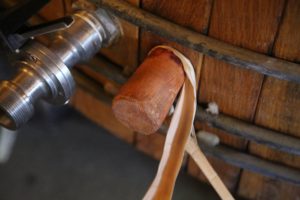
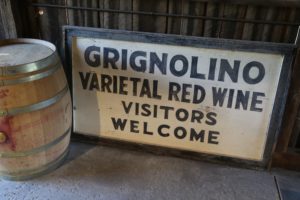 Both the Grignolino and the Ink Grade Ports are an excellent quality to value ratio. Heitz used to produce these two port-style wines each year.
Both the Grignolino and the Ink Grade Ports are an excellent quality to value ratio. Heitz used to produce these two port-style wines each year.
The Heitz Cellars Ink Grade Port Napa Valley is a blend of Touriga Nacional, Tinta Roriz, Tinta Cao, Souzao, Tinta Bairrada, Tinta Madeira, Tinta Amarella and Bastardo. This non vintage was most likely bottled in the early 2000s (based on when we purchased it) and is about 20 years old at the time of our tasting. This wine has held its color nicely over two decades and shows medium garnet in the glass. The bouquet thrills dessert wine enthusiasts with intense aromas of prune, cherry liqueur, blackberry jam (reminds us of the blackberry jam we used to enjoy from the Apple Farm in San Luis Obispo), fig newton, milk chocolate, cardamom, cinnamon stick and caramelized sugars. This nectarous beauty is very sweet across the palate but in no way contributes to any syrupy or cloying characteristics. Texturally this wine is soft. It offers flavors of raisons, ripe plum, prune and a plethora of assorted baking spices. The finish is rich and lingers with both sweetness and flavor for an extended period of time. And this wine was bottled as Heitz Cellars (with an s at the end of cellar).
Grignolino is a variety that is mostly grown in the Piedmont region of Northern Italy. Of 1,100+ commercial Napa Valley wine producers that we have visited and tasted with to date, this is the only winery we are aware of that grows and produces this variety. After Joe was introduced to this variety through Leon Brendel he kept growing and making this wine (part of a contractual agreement at the time of the sale). It is remarkable that the Heitz’s continued to produce this very obscure (for California) variety for decades. This variety used to grow in the vineyard next to the tasting room on Highway 29 but since 1975 it no longer grows here. As of our latest update to this review Heitz Cellar maintains about 7 acres of this variety on their estate property at the end of Taplin Road. Other varieties planted here include several Portuguese wine grapes, Cabernet Sauvignon, Merlot, Tempranillo and Syrah. The winery estate property is about 160 acres of which approximately 1/3 is planted to wine grapes.
The 2004 Heitz Cellar Grignolino port-style wine opens up with amazing floral and fruit aromas which quickly invite one to taste. Flavors of strawberry and raspberry show well with delicate tannins anchoring the finish. This wine in Italy is sometimes referred to as “little strawberry” and these fruit flavors are definitely present in this wine.
The Ink Grade Port was first produced in 1994 and was made for many years but is no longer produced by Heitz Cellar. Only three times was it bottled with a vintage date. As a result, most releases were non-vintage. With a non-vintage wine such as this, consumers get the best of both worlds, bright fruit coming from younger wine as well as the aged characteristics from older vintages. This wine is rich in flavor and alcohol with a sweetness that is perfectly in balance. Flavor, sugar and alcohol are key ingredients in these types of wines and if one of these is out of balance it can be very noticeable.
This wine is certainly not just sugar and alcohol; it has a richness and complexity of flavor not often found in ports priced much higher than this one. The nose is very fruit driven with a palate showing dark fruit including baked black cherry and plum. Each year this wine contained a number of ancient Portuguese varieties planted on their Taplin estate. These particular varieties are extremely rare to find grown in Napa Valley. As of our latest update to this review, the use of these varieties has since been transitioned into a red wine bottled under Brendel Wines and are no longer being used for Heitz Cellar wines.
—
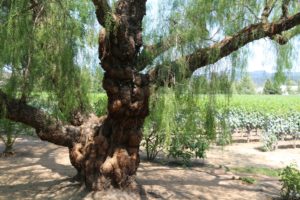
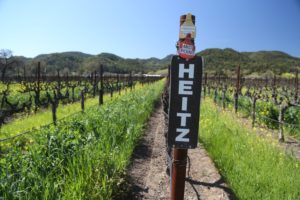 We will close this review with a humorous story. Some years back the famed wine critic Robert Parker said one of their wines was lacking in aromatics. After hearing this, Joe Heitz then sent him a box of handkerchiefs insinuating that Parker had a cold when he tasted this wine. Nice! Their wines are distributed in all 50 states as well as a limited number of other countries.
We will close this review with a humorous story. Some years back the famed wine critic Robert Parker said one of their wines was lacking in aromatics. After hearing this, Joe Heitz then sent him a box of handkerchiefs insinuating that Parker had a cold when he tasted this wine. Nice! Their wines are distributed in all 50 states as well as a limited number of other countries.
Heitz Cellar never had a wine club during their decades of ownership. After Gaylon purchased the property, a wine club was created offering three membership levels: Tradition (6 bottles per release), Heritage (9 bottles per release) and Prestige (12 bottles per release + one Magnum). A special additional membership offering, the Legacy Collection offers access to exclusive library offerings.
And in 2021 Limousin oak barrels arrived for use in their cellar – these barrels are extremely rare due to their size.
Total annual production is around 38,000 cases but this will change in the coming years. For more information, to purchase wines and or to schedule a tasting, visit: www.heitzcellar.com
LAWRENCE WINE ESTATES
Lawrence Wine Estates was founded in 2020 by Master Sommelier and Managing Partner Carlton McCoy and the Lawrence Family.
Proprietor Profile
Gaylon is a principal investor in one of the country’s largest agricultural businesses, The Lawrence Group (based in Arkansas). In addition to their vineyard holdings in Napa Valley, the group owns property in Florida, Illinois, Missouri, Arkansas and Mississippi (some 180,000 acres of farmland total focusing on cotton, rice and citrus). The group is also diversified into banking services; initially in 1988 and as of our latest update to this review own 8 community banking companies with three of the companies operating various branches in the greater Nashville. The Lawrence Group also owns select pieces of real estate in Nashville including Peabody Plaza.
Other investments include much of the town of Wilson in Arkansas and U.S. Air Conditioning Distributors – a major HVAC distributor with some 50 branches in select cities in the western USA. And in addition to his Napa Valley holdings, he is a major investor in the former Mare Island Naval Shipyard (Oakland Bay Area, California) with development occurring under The Nimitz Group with partners winemaker Dave Phinney (founder of The Prisoner and Orin Swift Cellars) and Sebastian Lane (Depiction Wines).
Mare Island, California
Nashville, Tennessee connections
- Welcome to Nashville!
- Peabody Street, Nashville
- Peabody Plaza, Nashville
- Volunteer State Bank, north of Nashville
- F&M Bank, Franklin Tennessee
- Capstar entrance, Nashville
- Capstar Building, Nashville
- Lawrence Group,Capstar building, Nashville
Wilson, Arkansas
One stumbles into this town and quickly realizes its significantly different than other small Arkansas farming towns. Located only 45 minutes from downtown Memphis, Wilson is a small town with a very picturesque center (the Wilson Square). Visiting the square almost feels like being on a movie set. Highlights include the Wilson Cafe, Gunn’s Supermarket (a remarkably well stocked grocery store for a tiny town), White’s Mercantile (owned and operated by Holly Williams, the granddaughter of famous country crooner, Hank Williams senior), The Louis Hotel overlooking Wilson Square, the Hampson Archeological Museum State Park (containing a collection of Native American artifacts) and right on the edge of town – the progressive project-based learning Delta School (K-9th grade).
And events are held throughout the year including the Wilson Wine Experience (select tastings).
The town was founded in 1886 by Robert E. Lee Wilson (initially to support a sawmill but later for cotton farming). The modern-day renaissance of Wilson began after 2010, the year that Gaylon Lawrence Jr purchased the entire commercial real estate in town and much of the surrounding farmland acreage from the Wilson family. Today, Gaylon’s firm, The Lawrence Group maintains a presence just off of the square at 1 Park Avenue – located across from the tiny post office.
It doesn’t take one long to exit the cozy confines of Wilson for dirt roads running through surrounding cotton fields. And if one drives west about 15 minutes – one will arrive in Dyess, the boyhood town of Johnny Cash.
For more information, visit: www.wilsonarkansas.com
Demeine Estates
Launched in July 2020, Demeine Estates is a Napa Valley based négociant & broker of family-owned wineries and brands from both Napa Valley under the Lawrence ownership. As of our latest update to this review, Demeine Estates represents wines from the following Napa Valley brands or wineries: Brendel Wines (est. 2021), Burgess Cellars, Heitz Cellar, Haynes Vineyard, Ink Grade Estate (est. 2021) and Stony Hill Vineyard. They also represent several international producers.
Brendel Wines opened a tasting room in downtown Napa in the historic Migliavacca Building (next to the Goodman Library) in mid-March 2022. Ink Grade Estate maintains a tasting room in St. Helena (opened in 2023 after significant interior remodeling) and Burgess Cellars makes their wines and offers hospitality at their property on the southern part of Silverado Trail. Haynes Vineyard does not offer a tasting space to consumers although will meet trade at the vineyard.
We maintain individual reviews of all these Lawrence owned Napa Valley wineries or brands on this website.
Château Lascombes, Bordeaux
This is the largest wine estate in Margaux with 120 hectares (296 acres) in the Margaux appellation and an additional 10 hectares (24 acres) in the Haut-Médoc appellation. The chateau was originally built in the 17th century and takes its name from Antoine de Lascombes the owner in the 1600s; its ground floor still survives with subsequent owners having added on to the building in the 19th century. In 1952 Russian wine writer Alexis Lichine and a group of investors including David Rockefeller purchased the estate. It is a classified 2nd growth.
Winemaker Philip Togni of Napa Valley’s Togni Vineyard on Spring Mountain was assistant winemaker here in 1956.
In October 2022 Lawrence Wine Estates purchased about 70% of Château Lascombes, a second-growth winery located in the Margaux appellation in Bordeaux from the French based insurance company MACSF. Gaylon Lawrence had long been interested in owning a French chateau; this is an investment in the ‘now’, but also for his children and subsequent generations.
Vines growing on the estate have been dated back to the 17th century. Their vineyards are planted to Merlot, Cabernet Sauvignon and a small portion of Petit Verdot. This is the largest vineyard in Margaux including having the largest planting of Merlot in the appellation. Since the transition in ownership winemaker Axel Heinz (who we also met during our visit to the estate) was hired as the winemaker and estate director. Previously he spent 16 years at Ornellaia and Masseto in Italy. While born in Germany, he was raised in Bordeaux, early in his career worked at several Bordeaux chateaus. He is extremely familiar with the region. His focus will be to elevate the winemaking at Château Lascombes and will introduce more Cabernet Sauvignon into their blends and change a few items in the cellar including perhaps adding amphora to their repertoire.
A modern tank room opened in time for the 2021 harvest including a number of highly polished 80HL tanks. Converting to these tanks has reduced the amount of water needed to clean them compared to their previous tanks. The grapes are loaded into 10 kilo plastic picking bins and then are put through an optical sorter. Stainless steel vats driven by electric motors are used to load grapes into the tanks via a hopper.
The wines spend up to a month fermenting before being gravity fed to French oak barrels for their aging. The winery has two barrel rooms one for the newest vintage in which the wines are aged for about 12 months before being transferred to the other next door room for an additional 6 months of aging before being bottled. Blending tanks are conveniently located within the barrel rooms and blends are typically created after aging for 6 months. And some of the tanks are on OXO rollers. The wines are fined using egg whites prior to bottling and then generally aged in bottle for 6 months on the property before being released.
A unique space within the winery is the ‘experiment room’ containing small stainless steel tanks for various micro ferments. Certain parts of their vineyard can be picked separately including organically farmed sections and then fermented here.
The focus of their winemaking is on the ‘grand vin’, Château Lascombes and the second wine, the Chevalier de Lascombes which is blended with higher amounts of Merlot. And this wine is aged in both foudre and French oak barrels using primarily used barrels from the primary Château Lascombes wines.
Select wines
The 2022 Château Lascombes is the year when more Cabernet Sauvignon was introduced in the blend. This wine is 67% Cabernet Sauvignon, 30% Merlot and 3% Petit Verdot. This wine is deep ruby and opaque with an amaranthine rim; the nose is darkly fruited including aromas of blackberry, boysenberry, mulberry and dark raspberry along with some accompanying barrel spice notes. Its balance is immediately noticeable for being so young. The palate somewhat echoes the bouquet in terms of flavor. It offers a savory character, especially noticeable on the mouth watering finish. The tannins are already finely dispersed and linger softly with a light chalky character. We tasted this wine from a barrel sample.
The 2019 Château Lascombes is a blend of 50% Cabernet Sauvignon, 45% Merlot and 5% Petit Verdot and was aged in 60% new French oak barrels. This wine is deep ruby in color and nearly opaque in the glass; the bouquet offers aromas of blackberry, dark plum, cloves, a dried herb not – perhaps of thyme and an Asian 5-star spice note. This wine shows plenty of youthfulness on the palate with flavors of Pakistani mulberry and blackberry. The tannins are broadly distributed with a lightly grainy texture. Their integration is already showing, even at this young age. The finish is long both in terms of texture and flavor.
The 2016 Château Lascombes is a blend of 50% Merlot, 47% Cabernet Sauvignon and 3% Petit Verdot and was aged for 18 months in 70% new French oak barrels. This wine is deep ruby; the bouquet is sweetly fruited including of cherry, dark licorice, black raspberry and blackberry. A complex vintage in Bordeaux shows its character in this particular bottling. The wine is still very youthful and fresh 8 years post vintage at the time of our tasting. The palate reveals flavors of plum, cherry, mulberry, chocolate and a light woodsy spice which lingers on the finish. The palate is well-layered and finishes with a noticeable brightness and long lasting chewy tannins. We noted the pleasing tension between tannins, acidity and flavor. This bottling has loads of life ahead of it still with the proper aging.
The 2020 Château Chevalier Lascombes is a blend of exactly 50% Merlot and 50% Cabernet Sauvignon. This wine was aged for 16 months in 100% once used barrels, underwent malolactic fermentation in barrel with the lees stirred for 4 months. It is deep ruby in color with aromas of red plum, dried herbs and cherry. The bouquet is savory and fresh; we recommend enjoying this wine in its youth. The palate offers flavors of plum, cherry and dark chocolate. The tannins are supple and seamless on the smooth finish. Easy drinking and enjoyable.
—
Visits by appointment include a guided tour of the modern winery including a stop to see their library collection containing their oldest bottle from 1881. Visitors will then taste the current release wines in a room within the chateau. The wines have a long history of being distributed and sold in the U.S. in part being promoted by Alexis Lichine. They are also on the Place de Bordeaux. For more information and to schedule a visit, see: www.chateau-lascombes.com
Winemaking
In the Service of Others
In late 2022, Lawrence Wine Estates launched a program called In the Service of Others, to support non-profit organizations in Napa Valley. Guests to any of the LWE properties will have the opportunity to donate a dollar amount of their choice, with 100% of their donation provided to a featured nonprofit at that time. LWE will work with one non-profit at a time and will rotate featured three non-profits through this program each year. Nonprofits to have been featured already include OLE Health and the Napa Farmworker Foundation.
Luminary Napa Valley
In 2024 Lawrence Wine Estates’ launched Luminary Napa Valley, a private lifestyle club which provides access for members to unique experiences, rare wines produced from wineries within the Lawrence Wine Estates’ portfolio and private concierge services.






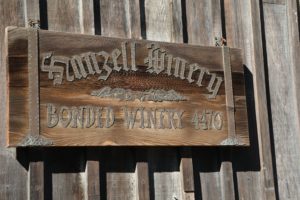
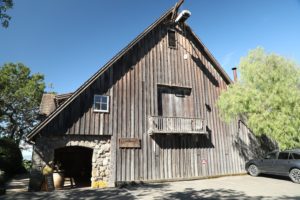
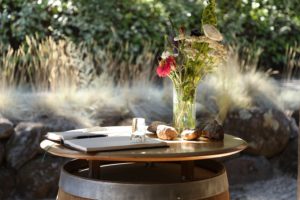
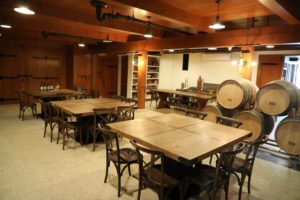
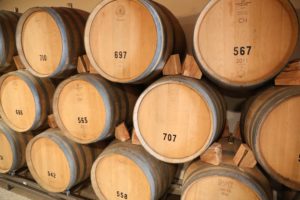
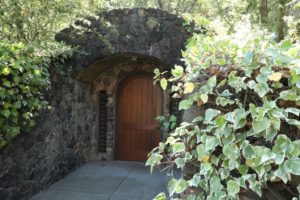
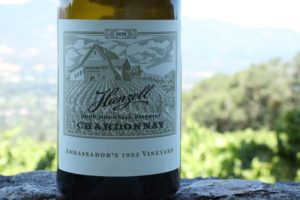
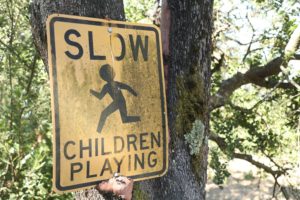
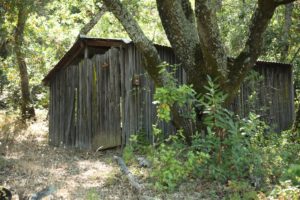
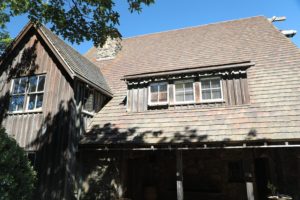
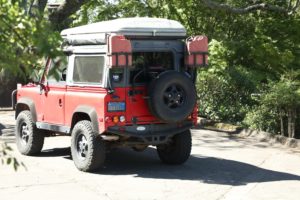

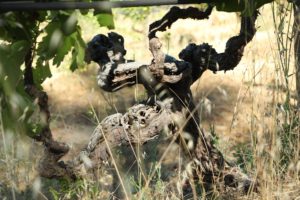
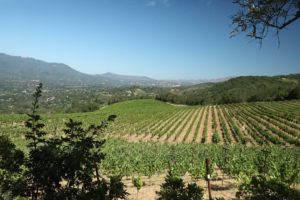
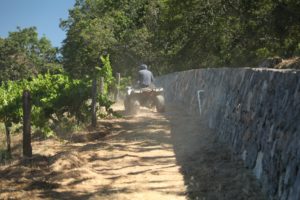
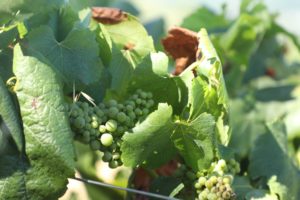
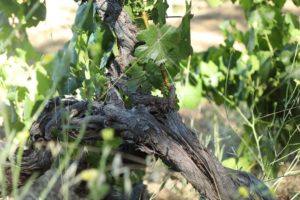
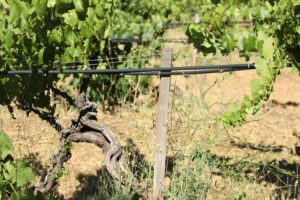

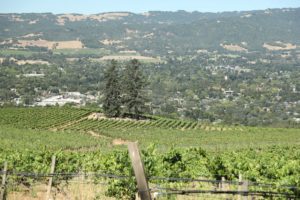
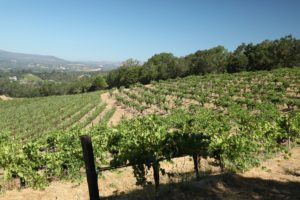
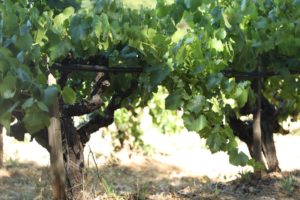
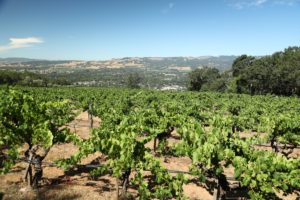
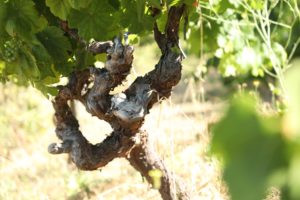
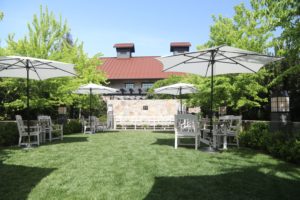
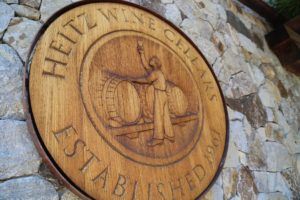
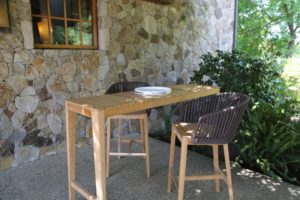
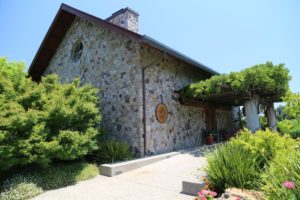
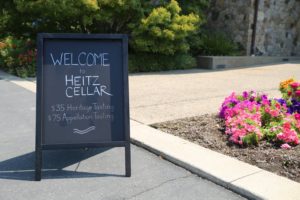
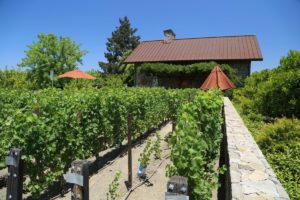
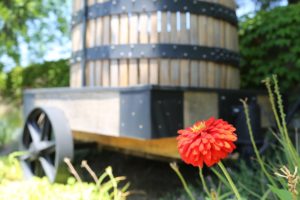
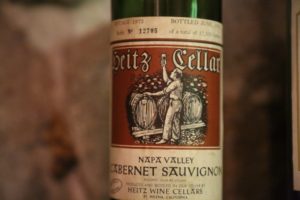
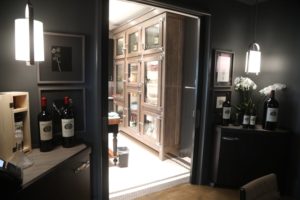
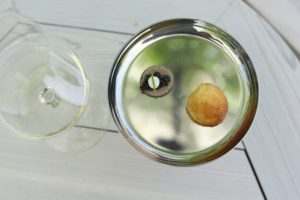
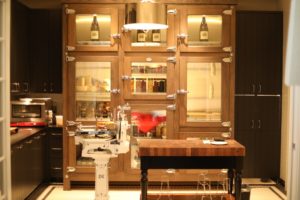
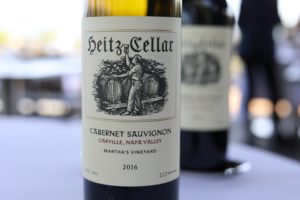
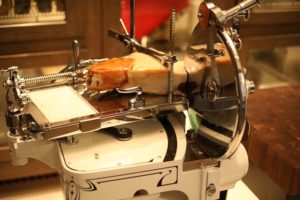
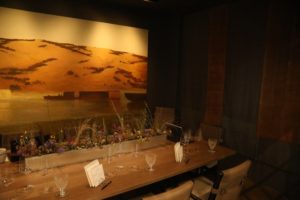
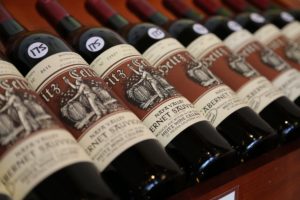
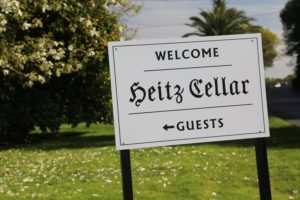
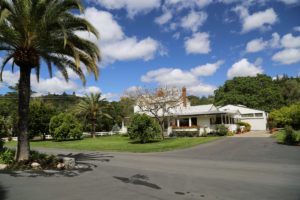
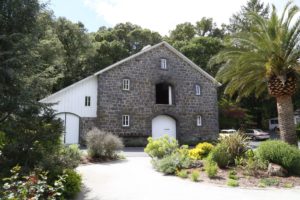
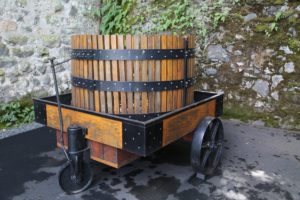
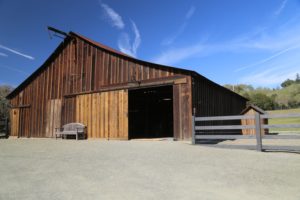
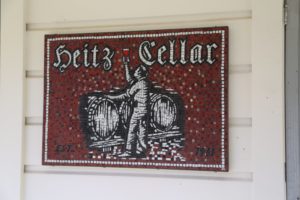
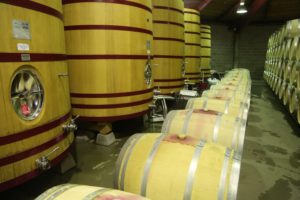
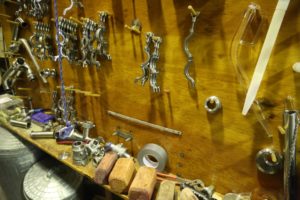
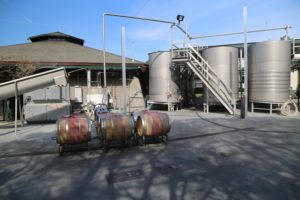
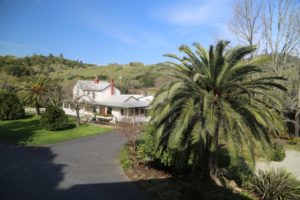
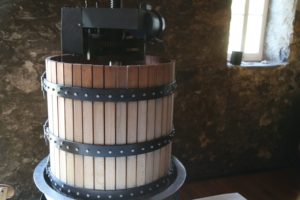
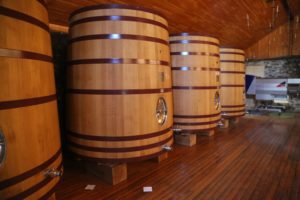
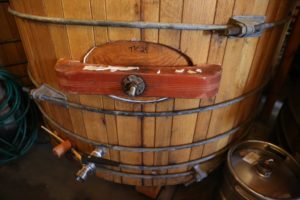
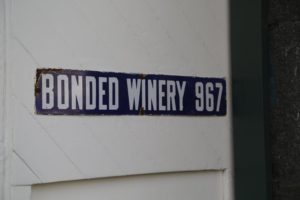
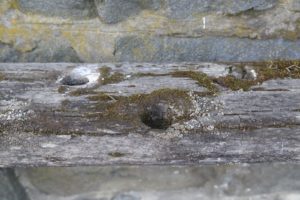
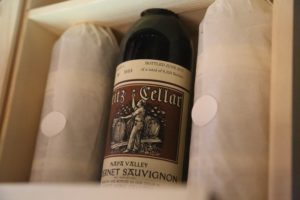
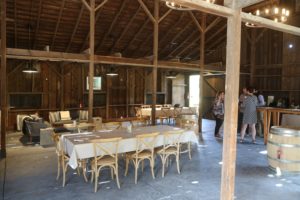
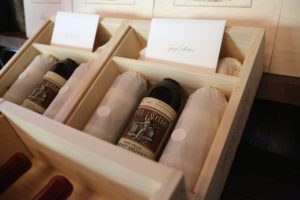
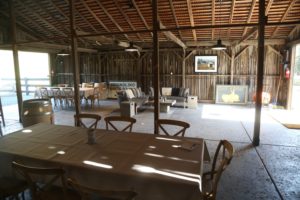
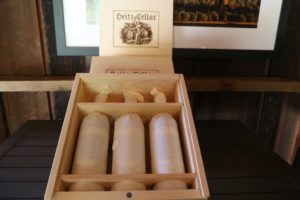
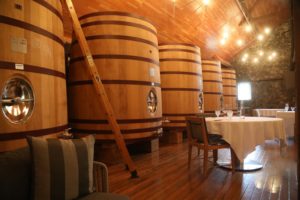
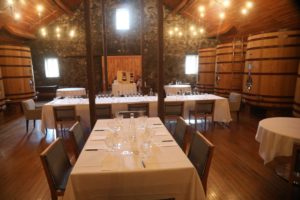
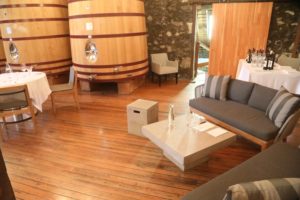
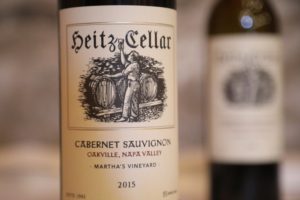
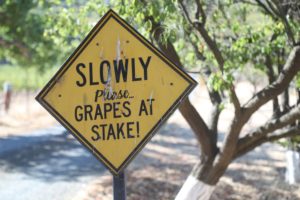
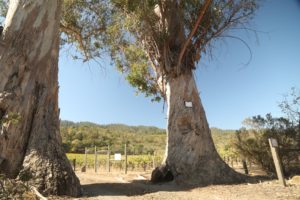
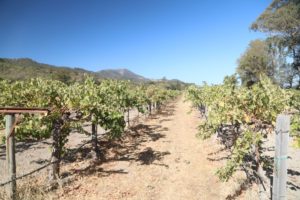
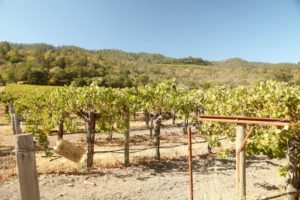
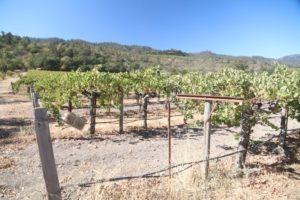
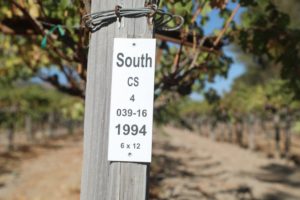
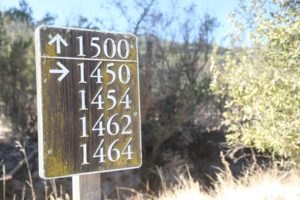
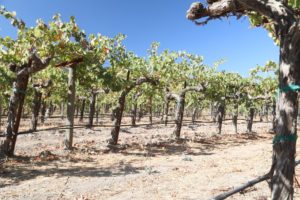
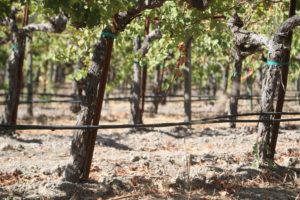
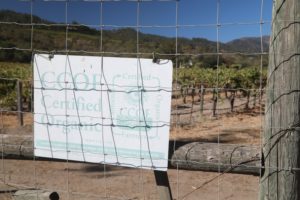
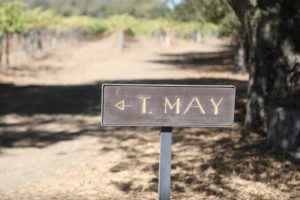
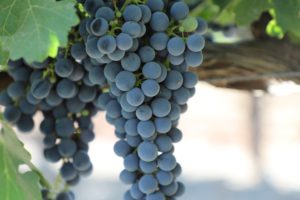
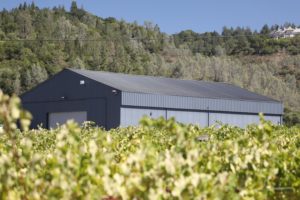
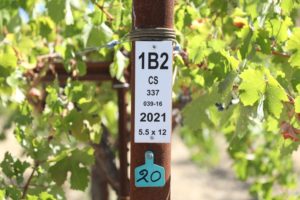
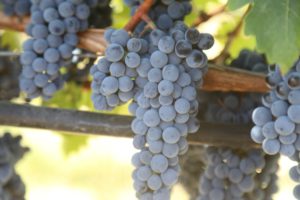
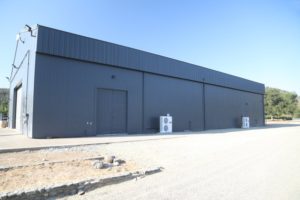
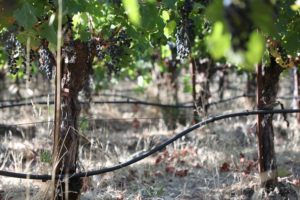

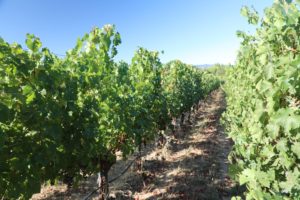

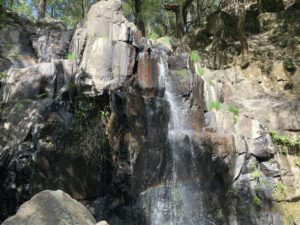
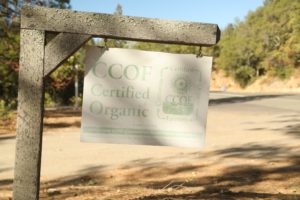
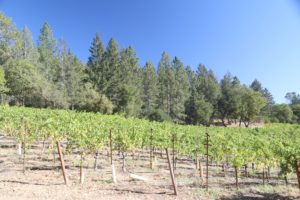
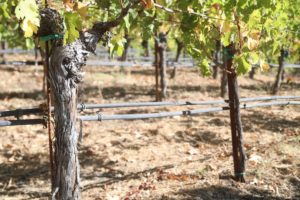
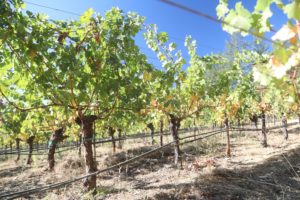
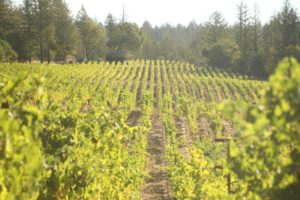
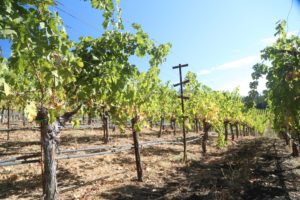
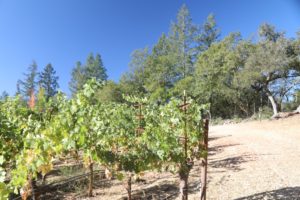

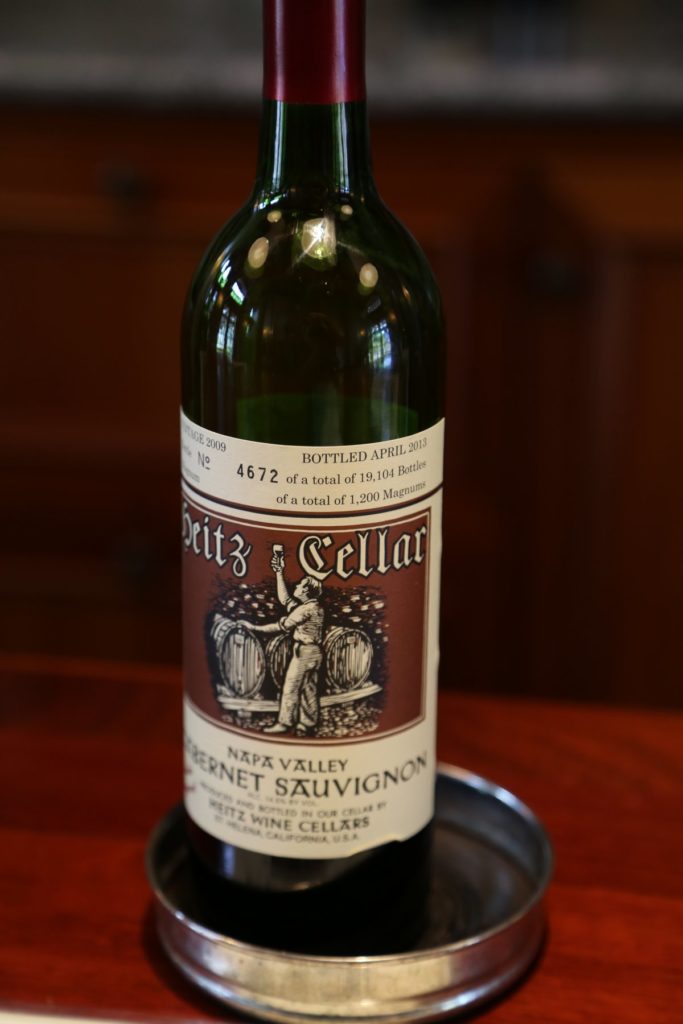
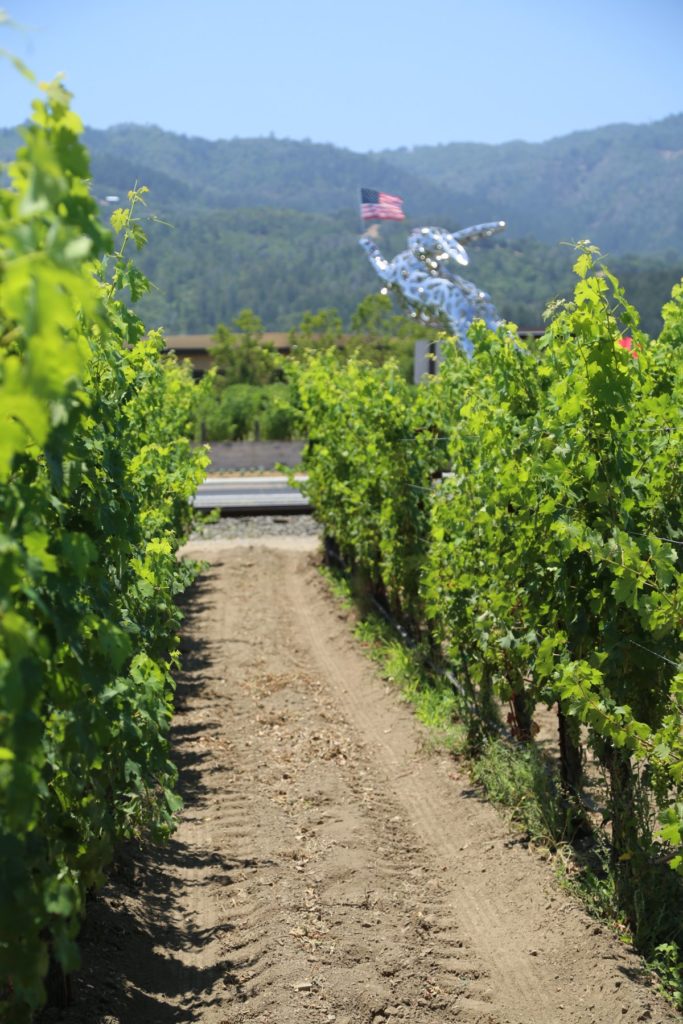
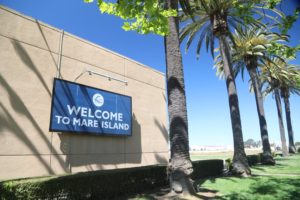
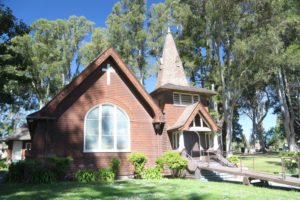
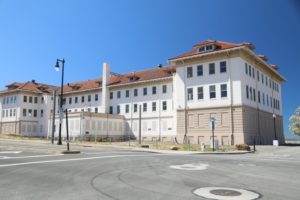
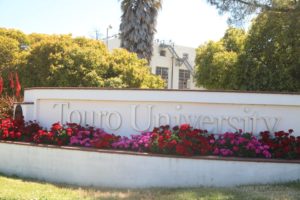
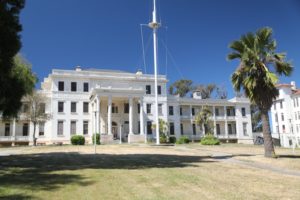
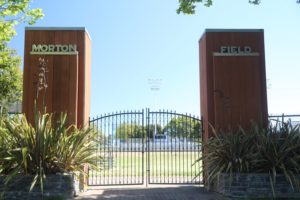
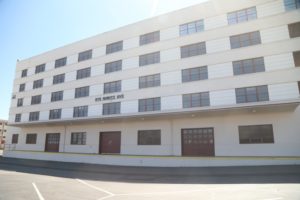

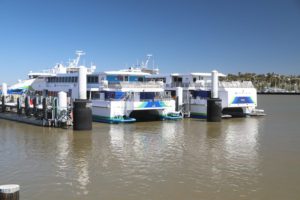

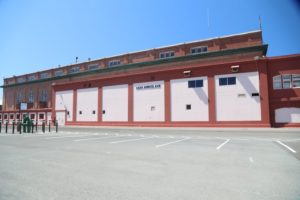
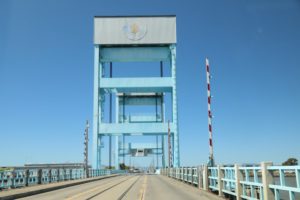
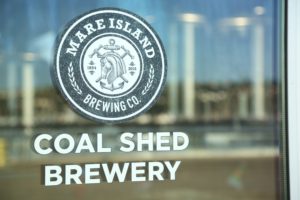
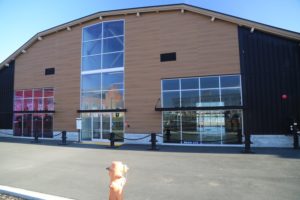
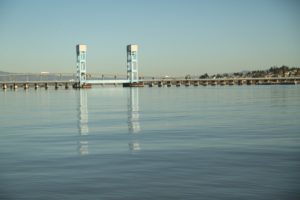
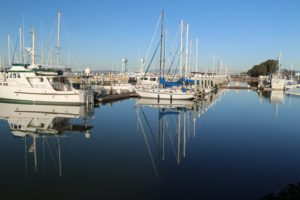
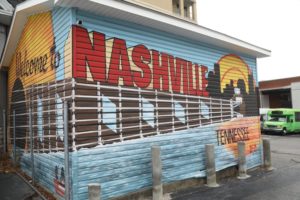
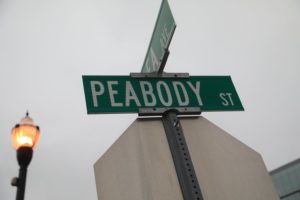
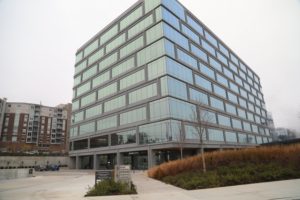
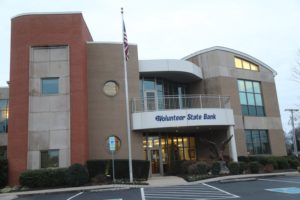
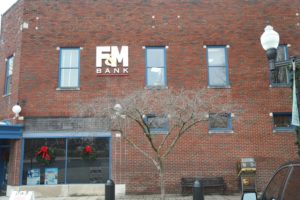
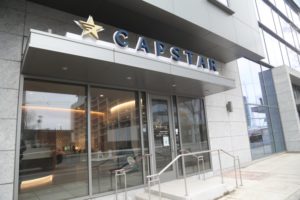
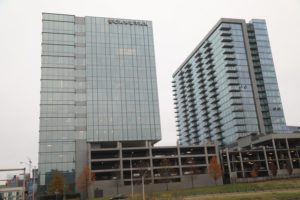
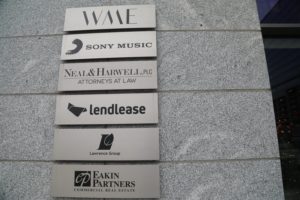
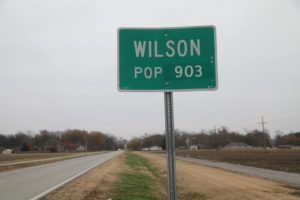
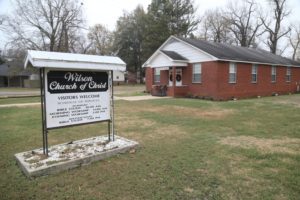
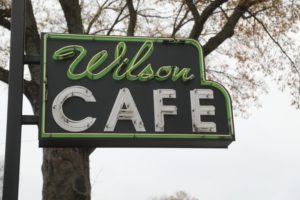
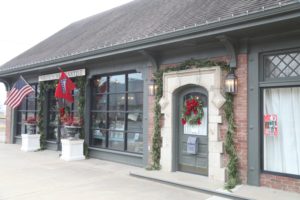
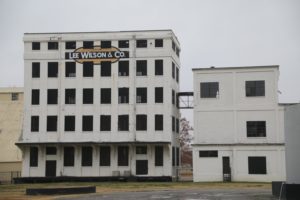
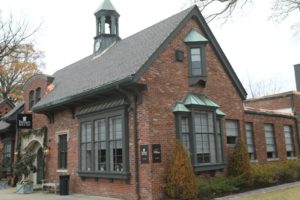
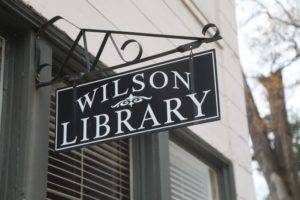
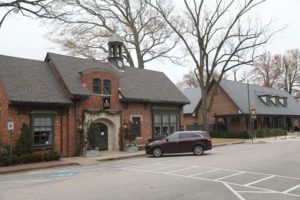
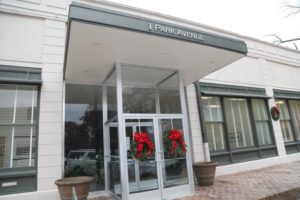
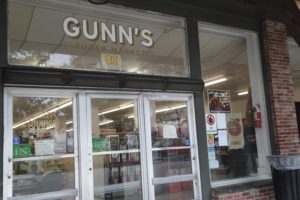
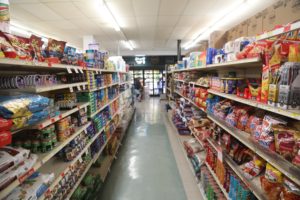
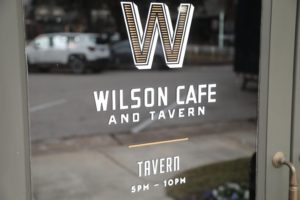
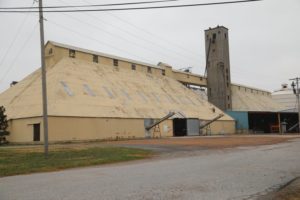
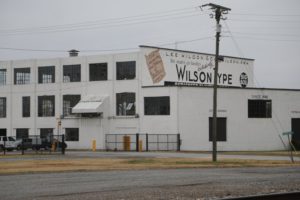
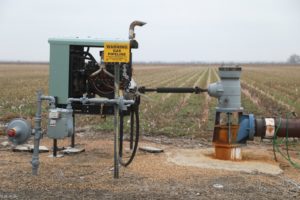
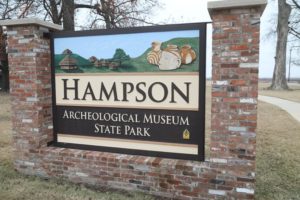
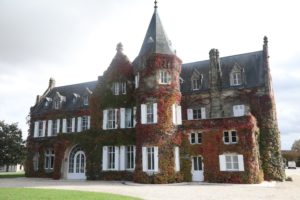
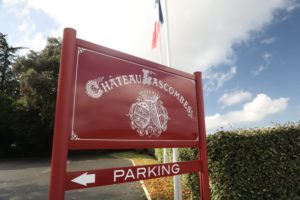
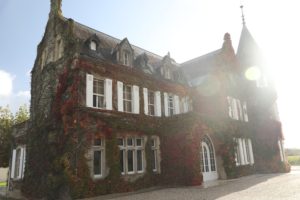
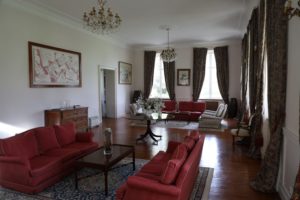
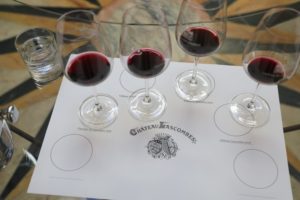
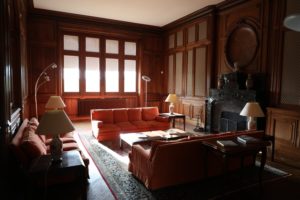
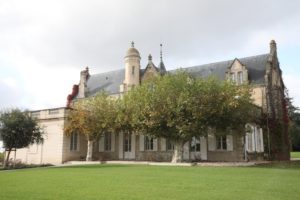
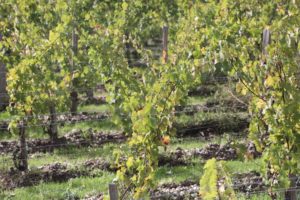
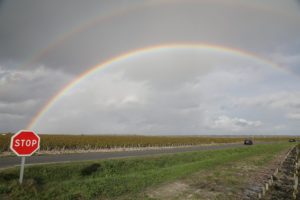
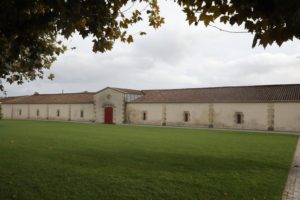
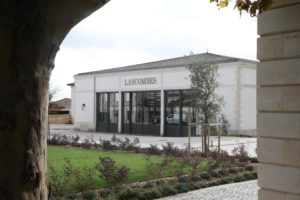
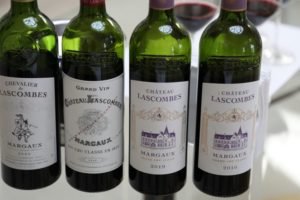
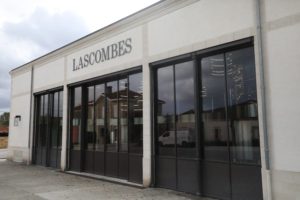
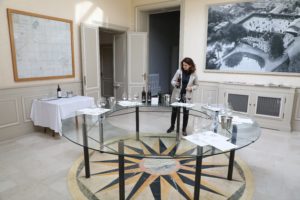
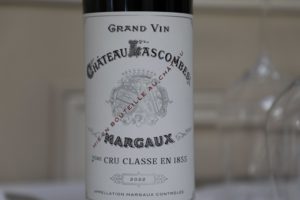
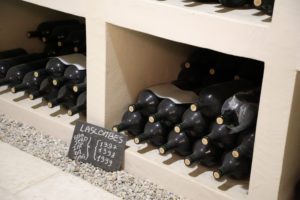
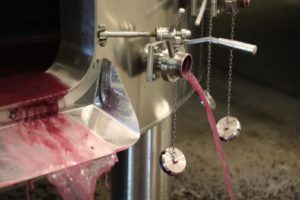
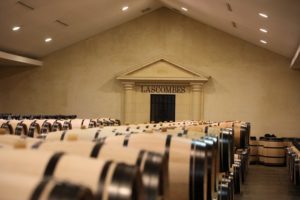
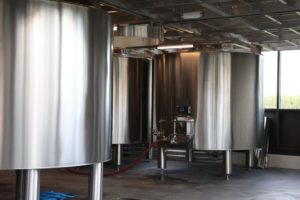
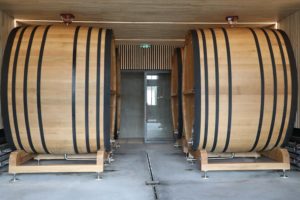
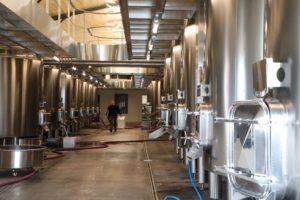
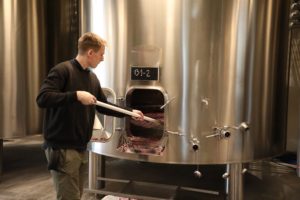
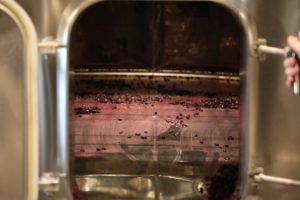
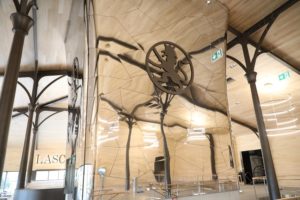
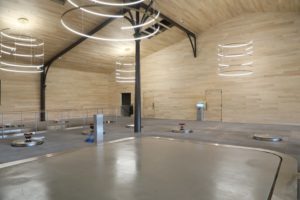
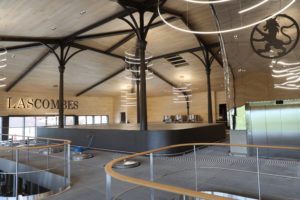
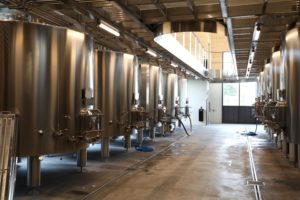
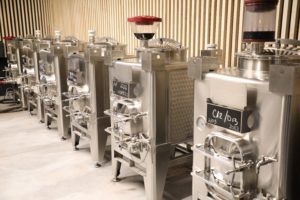
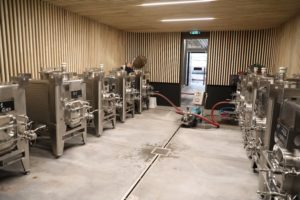
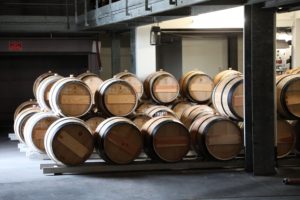
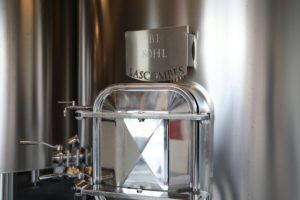
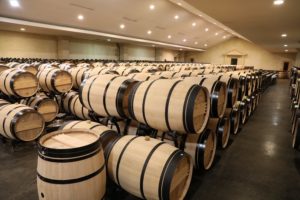
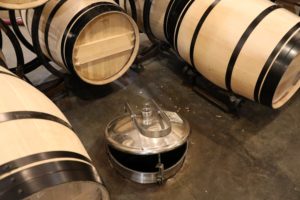
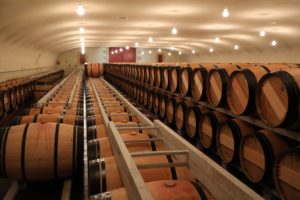
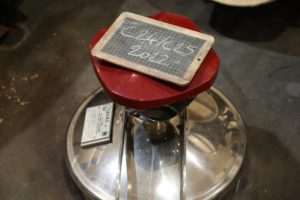
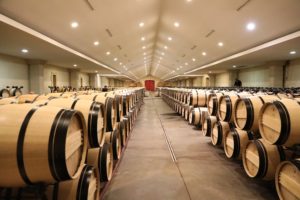
A friend took me to this cellar a few days back. When did you go?
I usually visit at least once a year to continue to update and add to this profile. Thank you.